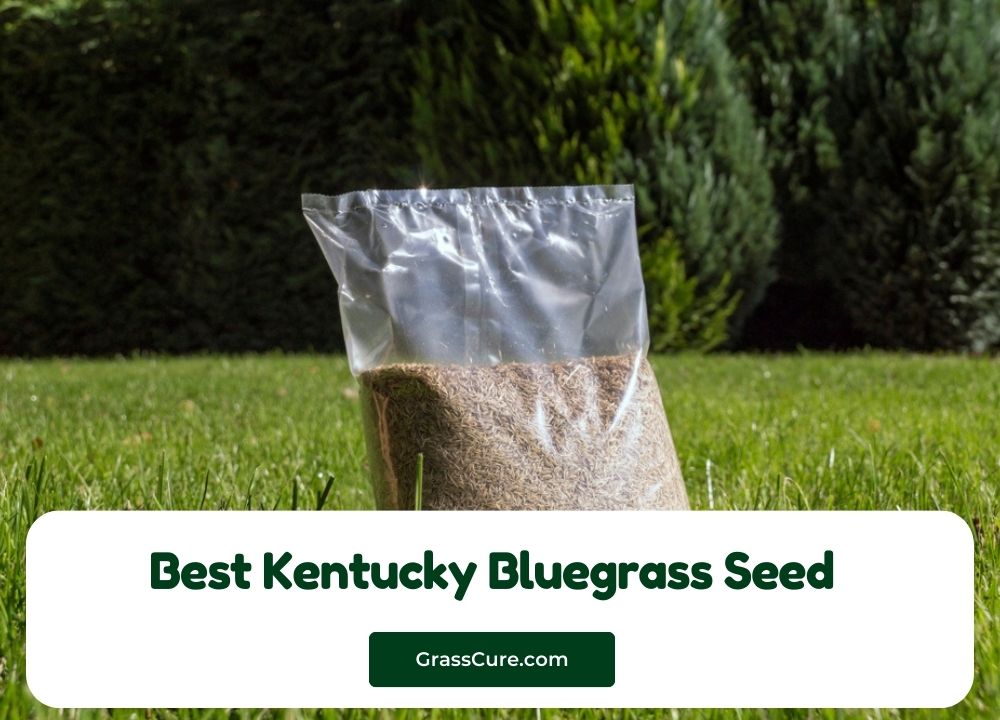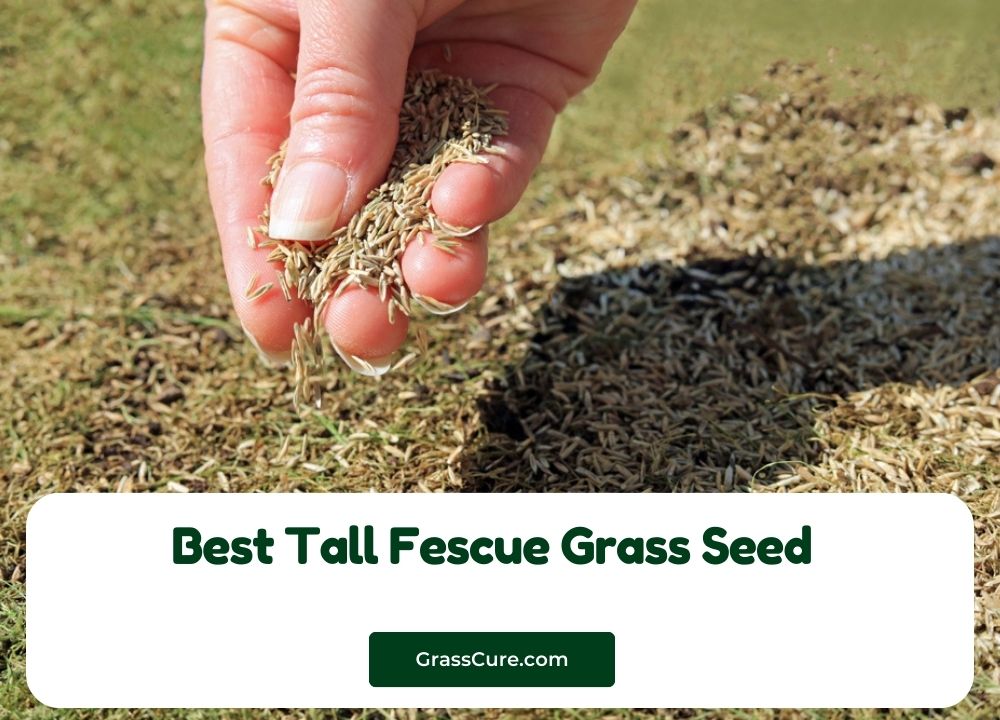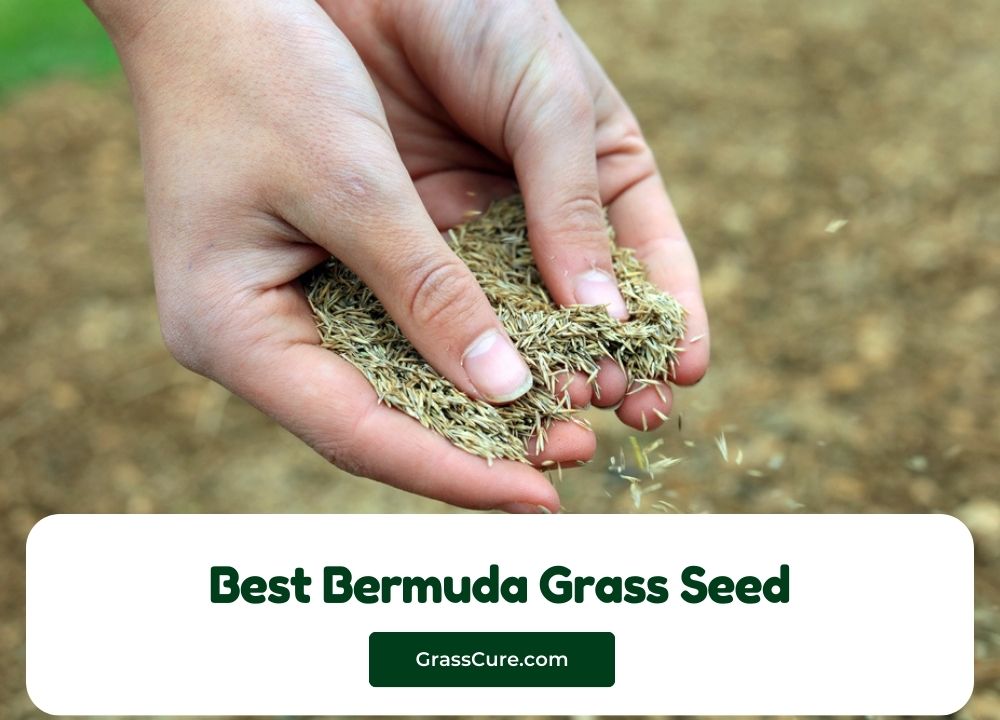Sandy soil presents unique challenges for homeowners who dream of achieving a lush, green lawn. The quick-draining nature of sandy soil means water and nutrients slip away before grass roots can absorb them effectively. This comprehensive guide examines the top grass seed options specifically chosen for their ability to thrive in sandy conditions.
Understanding sandy soil characteristics helps you make informed decisions about lawn care. Sandy soil drains rapidly, warms up quickly in spring, and allows easy root penetration. However, these same qualities create problems with water retention, nutrient deficiency, and potential drought stress during hot summer months.
Contents
- Understanding Sandy Soil and Grass Growth
- Key Factors to Consider When Choosing Grass Seed for Sandy Soil
- Product Reviews: Top 5 Grass Seeds for Sandy Soil
- Detailed Comparison Analysis
- Installation Tips for Sandy Soil Success
- Maintenance Strategies for Sandy Soil Lawns
- Seasonal Care Calendar for Sandy Soil Lawns
- Troubleshooting Common Sandy Soil Problems
- Cost Analysis and Value Considerations
- Environmental Impact and Sustainability
- Regional Considerations and Climate Zones
- Final Recommendations and Conclusion
Understanding Sandy Soil and Grass Growth
Sandy soil consists primarily of large particles that create spaces between them, allowing water and nutrients to move through quickly. This fast drainage prevents waterlogging but also means grass roots must work harder to access moisture and essential nutrients.
The pH level of sandy soil typically ranges from slightly acidic to neutral, which suits most grass varieties well. However, the low organic matter content in sandy soil means fewer nutrients are available for grass growth. Successful lawn establishment in sandy conditions requires selecting grass varieties that tolerate these challenging conditions.
Cool-season grasses often struggle in sandy soil because they prefer consistent moisture levels. Warm-season varieties typically adapt better to sandy conditions due to their deeper root systems and drought tolerance. However, certain cool-season grasses with specific breeding traits can succeed in sandy environments when properly managed.
Soil temperature fluctuations affect grass seed germination in sandy soil more dramatically than in other soil types. The rapid heating and cooling cycles can stress young seedlings, making timing and variety selection crucial for successful establishment.
Key Factors to Consider When Choosing Grass Seed for Sandy Soil
Drought tolerance stands as the most critical factor when selecting grass seed for sandy soil applications. Varieties with deep root systems can access moisture from lower soil layers, providing better survival during dry periods. Look for grass seeds specifically bred for drought resistance and low water requirements.
Heat tolerance works hand-in-hand with drought resistance in sandy soil conditions. Sandy soil heats up faster than clay or loam soil, creating stress for grass varieties that prefer cooler conditions. Heat-tolerant varieties maintain color and growth even when soil temperatures rise significantly.
Root development characteristics determine how well grass will establish in sandy conditions. Deep-rooted varieties create extensive underground networks that improve water and nutrient uptake. Some grass types develop thick, fibrous root systems that help bind sandy soil particles together.
Germination speed affects success rates in sandy soil because faster-germinating seeds establish before moisture conditions become limiting. Quick-establishing varieties get their root systems developed before facing the full challenges of sandy soil drainage.
Traffic tolerance becomes important because sandy soil provides less cushioning for grass crowns. Selecting varieties that recover quickly from foot traffic ensures your lawn maintains its appearance despite the challenging growing medium.
Product Reviews: Top 5 Grass Seeds for Sandy Soil
1. Jonathan Green Black Beauty Heat & Drought Resistant Grass Seed
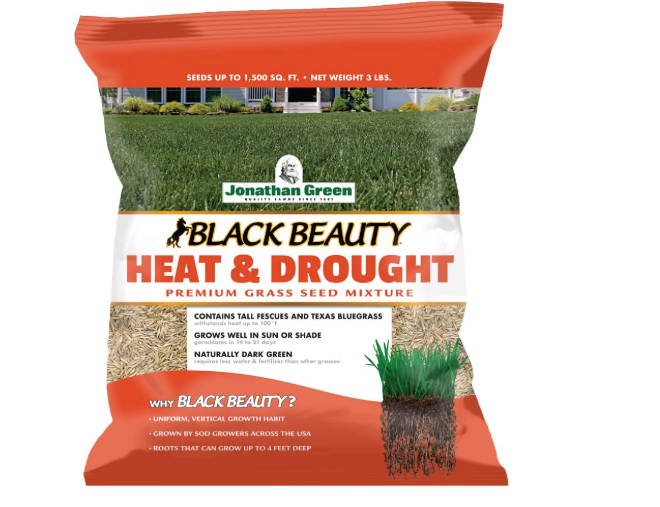
Jonathan Green’s Black Beauty formula specifically targets the challenges of sandy soil with its heat and drought-resistant properties. This cool-season blend combines tall fescue and perennial ryegrass varieties selected for their ability to thrive in challenging conditions.
The Black Beauty blend demonstrates exceptional drought tolerance through its deep root system development. Field testing shows this variety maintains green color longer than traditional grass seed mixtures when water becomes limited. The inclusion of tall fescue provides the backbone of drought resistance, while perennial ryegrass adds quick establishment and traffic tolerance.
Heat resistance sets this product apart from standard cool-season grass mixtures. The carefully selected varieties continue growing actively even when soil temperatures reach levels that stress other cool-season grasses. This trait proves especially valuable in sandy soil that heats up rapidly during summer months.
The 3-pound package covers approximately 1,200 square feet when overseeding or 600 square feet for new lawn establishment. The seed coating includes nutrients that support early growth, helping seedlings establish before facing full sandy soil challenges.
Installation requires standard preparation techniques, but the drought-resistant properties become apparent within the first growing season. Users report successful establishment even in challenging sandy conditions where other grass seeds failed to thrive.
Pros:
- Exceptional drought and heat tolerance
- Deep root system development
- Quick establishment with perennial ryegrass component
- Maintains color during stress periods
- Suitable for high foot traffic areas
Cons:
- Higher price point than basic grass seed mixtures
- Requires consistent watering during establishment period
- Cool-season grass may struggle in extremely hot climates
2. Pennington Smart Seed Dense Shade Grass Mix

Pennington’s Smart Seed Dense Shade mixture addresses the unique challenge of growing grass in sandy soil areas that receive limited sunlight. This specially formulated blend combines shade-tolerant varieties with improved water efficiency characteristics.
The Smart Seed technology incorporates water-absorbing coating that helps seeds retain moisture during the critical germination period. This feature proves particularly valuable in sandy soil where standard seeds often dry out before successful establishment. The coating releases water slowly, extending the time seeds remain hydrated.
Shade tolerance capabilities make this product suitable for sandy areas under trees or near buildings where sunlight penetration is limited. The selected grass varieties continue photosynthesis effectively even with reduced light levels, maintaining healthy growth in challenging conditions.
The 7-pound package provides coverage for approximately 2,800 square feet when overseeding or 1,400 square feet for new lawn establishment. The larger package size offers better value for homeowners dealing with extensive sandy soil areas requiring renovation.
Water efficiency claims suggest this mixture requires up to 30% less water than conventional grass seed once established. This characteristic proves especially valuable in sandy soil where water retention challenges increase maintenance requirements.
Pros:
- Smart Seed coating improves germination rates
- Excellent shade tolerance for difficult areas
- Reduced water requirements after establishment
- Good package size for larger projects
- Combines multiple complementary grass varieties
Cons:
- Primarily designed for shade conditions
- May not perform optimally in full sun sandy areas
- Higher cost per pound than basic seed mixtures
3. Scotts Turf Builder Sun and Shade Mix with Fertilizer and Soil Improver
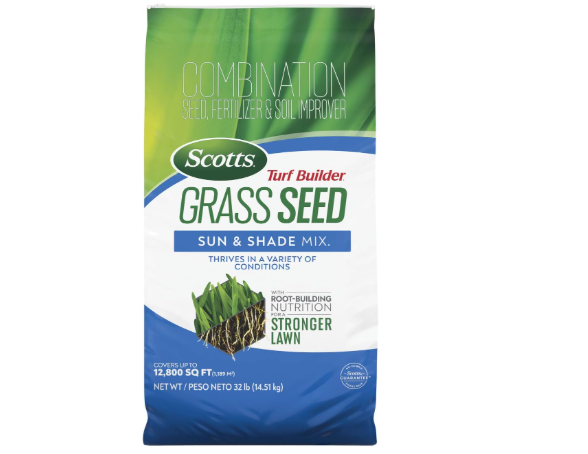
Scotts Turf Builder Sun and Shade Mix provides a comprehensive solution for sandy soil challenges by combining grass seed with fertilizer and soil improvement components. This all-in-one approach addresses multiple sandy soil limitations simultaneously.
The grass seed blend includes varieties selected for performance in both sunny and partially shaded locations. This versatility proves valuable for homeowners with sandy soil in various exposure conditions throughout their property. The mixture balances quick establishment with long-term durability.
Fertilizer integration eliminates the need for separate fertilizer application during seeding. The slow-release nitrogen formula feeds grass seedlings throughout the establishment period, compensating for the low nutrient retention typical of sandy soil. This feature simplifies the seeding process while improving success rates.
Soil improver components work to enhance water retention in sandy soil conditions. These organic materials help bind sandy particles together while increasing the soil’s ability to hold moisture and nutrients. The improvement effects become more pronounced as the organic materials decompose.
The 32-pound package covers approximately 10,240 square feet when overseeding or 5,120 square feet for new lawn establishment. This large package size provides excellent value for extensive sandy soil renovation projects.
Pros:
- Combines seed, fertilizer, and soil improver in one product
- Works well in both sun and shade conditions
- Excellent package size for large areas
- Simplifies application process
- Addresses multiple sandy soil challenges
Cons:
- May over-fertilize in some soil conditions
- Limited control over individual component ratios
- Higher upfront cost than seed-only products
4. Pennington Kentucky 31 Tall Fescue Penkoted Grass Seed
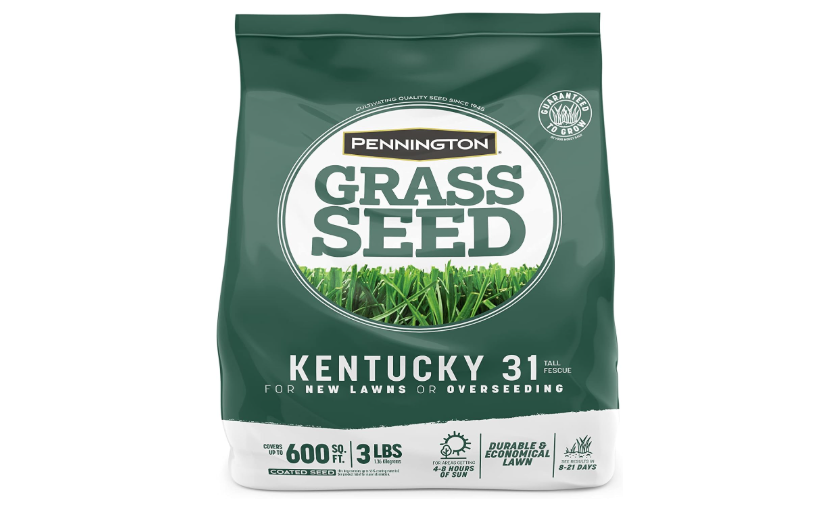
Pennington Kentucky 31 represents a time-tested solution for challenging sandy soil conditions. This tall fescue variety has demonstrated reliable performance in difficult growing conditions for decades, making it a dependable choice for sandy soil applications.
Kentucky 31 tall fescue develops an extensive root system that penetrates deeply into sandy soil layers. These roots can access moisture and nutrients from depths that other grass varieties cannot reach, providing superior drought tolerance. The mature root system also helps stabilize sandy soil and reduce erosion.
Heat and drought tolerance characteristics make this variety suitable for regions with hot summers and limited rainfall. Field performance data shows Kentucky 31 maintains acceptable color and density even during extended dry periods that stress other grass varieties.
The Penkoted seed coating provides protection against diseases and pests while improving germination rates. This coating proves especially valuable in sandy soil where seeds face additional stress from rapid moisture loss and temperature fluctuations.
Traffic tolerance ranks high among tall fescue varieties, making Kentucky 31 suitable for active family lawns. The thick, sturdy grass blades recover quickly from foot traffic damage, maintaining lawn appearance despite heavy use.
Pros:
- Proven performance in challenging conditions
- Exceptional drought and heat tolerance
- Deep root system development
- High traffic tolerance
- Economical price point
Cons:
- Coarser texture than fine fescue varieties
- Slower establishment than perennial ryegrass
- May require more frequent overseeding in some climates
5. Scotts Turf Builder Tall Fescue Mix with Fertilizer and Soil Improver

Scotts Turf Builder Tall Fescue Mix focuses specifically on the challenging conditions that sandy soil presents to grass establishment and growth. This product combines improved tall fescue varieties with integrated fertilizer and soil enhancement components.
The tall fescue blend incorporates newer varieties with improved characteristics compared to traditional tall fescue types. These enhanced varieties maintain the drought tolerance and deep root development of traditional tall fescue while offering improved color, texture, and disease resistance.
Fertilizer integration provides consistent nutrient release throughout the establishment period. The balanced fertilizer formula includes nitrogen for growth, phosphorus for root development, and potassium for stress tolerance. This complete nutrition package proves especially valuable in nutrient-poor sandy soil.
Soil improver components focus on enhancing water retention and nutrient-holding capacity in sandy soil. These organic amendments work gradually to improve soil structure while providing immediate benefits during seed establishment.
The 5.6-pound package covers approximately 1,792 square feet when overseeding or 896 square feet for new lawn establishment. This mid-size package suits most residential lawn renovation projects without excess waste.
Pros:
- Enhanced tall fescue varieties with improved characteristics
- Integrated fertilizer eliminates separate application
- Soil improver addresses sandy soil limitations
- Suitable package size for most home projects
- Combines proven tall fescue performance with modern improvements
Cons:
- Limited coverage area compared to larger packages
- Higher per-square-foot cost than basic seed
- May not be necessary for soil with adequate fertility
Detailed Comparison Analysis
When comparing these five grass seed options for sandy soil applications, several key performance factors emerge. Drought tolerance ranks as the most critical characteristic, with tall fescue varieties (Kentucky 31 and Scotts Tall Fescue Mix) showing superior performance in this area.
Heat tolerance follows closely behind drought resistance in importance for sandy soil success. The Jonathan Green Black Beauty blend demonstrates excellent heat tolerance for a cool-season mixture, while tall fescue varieties naturally excel in hot conditions.
Establishment speed varies significantly among the products, with mixtures containing perennial ryegrass establishing faster than pure tall fescue varieties. The Jonathan Green Black Beauty blend provides the quickest establishment, while Kentucky 31 tall fescue requires more patience but delivers superior long-term performance.
Cost considerations reveal significant differences in value propositions among the products. Basic Kentucky 31 offers the lowest cost per square foot, while premium products like Jonathan Green Black Beauty command higher prices for enhanced performance characteristics.
Coverage efficiency varies based on package sizes and recommended application rates. The Scotts Sun and Shade Mix provides the best coverage value for large areas, while smaller packages suit targeted renovation projects better.
Installation Tips for Sandy Soil Success
Soil preparation proves crucial for successful grass establishment in sandy conditions. Begin by testing soil pH and nutrient levels to identify any deficiencies that require correction. Sandy soil often benefits from organic matter incorporation to improve water retention and nutrient availability.
Timing grass seed application correctly increases success rates significantly in sandy soil. Plant cool-season grasses during fall months when soil temperatures remain warm but air temperatures cool down. This timing allows root establishment before winter dormancy and spring growth before summer heat stress.
Watering techniques require adjustment for sandy soil conditions. Apply water slowly and deeply rather than frequent light applications. This approach encourages deep root development while reducing water waste through rapid drainage.
Mulching seed beds helps retain moisture during the critical germination period. Use a thin layer of straw or seed-specific mulch to reduce evaporation while allowing light penetration for photosynthesis.
Fertilizer application schedules need modification for sandy soil due to rapid nutrient leaching. Plan for more frequent, lighter applications rather than heavy seasonal treatments. Slow-release fertilizers work particularly well in sandy conditions.
Maintenance Strategies for Sandy Soil Lawns
Watering management becomes the most critical maintenance aspect for grass growing in sandy soil. Develop a deep, infrequent watering schedule that encourages root development into lower soil layers. Monitor soil moisture at various depths to ensure adequate water penetration.
Fertilization programs require adjustment for sandy soil’s rapid nutrient loss characteristics. Implement lighter, more frequent applications using slow-release or organic fertilizers that provide extended nutrient availability. Soil testing every two years helps track nutrient levels and adjust programs accordingly.
Overseeding schedules may need acceleration in sandy soil conditions where grass plants face additional stress. Plan for annual overseeding in high-traffic areas and every two years for the entire lawn to maintain density and appearance.
Soil amendment continues throughout the lawn’s life in sandy conditions. Annual applications of compost or other organic materials gradually improve soil structure and water retention capabilities. These improvements compound over time, making maintenance easier.
Pest and disease monitoring requires attention because sandy soil stress can weaken grass plants’ natural resistance. Implement preventive treatments during high-risk periods and maintain proper cultural practices to reduce susceptibility.
Seasonal Care Calendar for Sandy Soil Lawns
Spring Season (March-May) Begin the growing season with soil temperature monitoring to determine optimal fertilizer application timing. Sandy soil warms quickly, often requiring earlier treatment than heavier soil types. Apply pre-emergent herbicides before soil temperatures reach 55°F consistently.
Start regular watering schedules as grass begins active growth. Deep, infrequent watering sessions work best to encourage deep root development. Monitor rainfall amounts and adjust irrigation accordingly to prevent both drought stress and overwatering.
Summer Season (June-August) Focus on stress prevention during the hottest months when sandy soil challenges peak. Maintain consistent soil moisture without overwatering, which can leach nutrients and weaken grass plants. Raise mowing heights to provide additional shade for soil and grass crowns.
Monitor for heat stress symptoms including wilting, color changes, and reduced growth rates. Adjust watering schedules based on weather conditions and grass performance. Avoid fertilizer applications during extreme heat periods to prevent additional plant stress.
Fall Season (September-November) Take advantage of optimal growing conditions for major lawn care activities. Plan overseeding projects during early fall when soil remains warm but air temperatures moderate. This timing provides ideal conditions for seed germination and establishment.
Apply winter fertilizer treatments designed for slow release throughout the dormant season. Sandy soil’s rapid drainage makes fall fertilization particularly important for spring recovery and growth initiation.
Winter Season (December-February) Minimize foot traffic on dormant grass to prevent damage that’s harder to repair in sandy soil conditions. Plan for spring renovation projects by ordering seeds and materials during winter months when selection and pricing may be better.
Review the previous year’s lawn performance and adjust management strategies for the coming growing season. Use winter months for equipment maintenance and planning seasonal care schedules.
Troubleshooting Common Sandy Soil Problems
Poor Water Retention Sandy soil’s rapid drainage creates ongoing challenges for maintaining adequate soil moisture. Install drip irrigation systems or soaker hoses to deliver water slowly and efficiently. Consider moisture-retaining soil amendments like vermiculite or water-absorbing crystals for severe drainage problems.
Mulching around grass areas helps reduce evaporation and slow water movement through soil. Organic mulches gradually decompose and improve soil structure while providing immediate moisture retention benefits.
Nutrient Deficiency Fast nutrient leaching in sandy soil creates ongoing fertility challenges. Switch to slow-release fertilizer formulations that provide extended nutrient availability. Organic fertilizers often work well because they release nutrients gradually as they decompose.
Soil testing every 12-18 months helps identify specific nutrient deficiencies before they affect grass health visibly. Target fertilizer applications based on test results rather than using general-purpose formulations.
Heat Stress Sandy soil’s rapid heating creates additional stress for grass plants during hot weather. Implement shade strategies where possible, such as strategic tree planting or temporary shade structures during extreme heat events.
Adjust mowing practices to reduce heat stress by maintaining higher cutting heights during summer months. Taller grass provides better soil shading and improved root system protection.
Erosion Issues Loose sandy soil can erode easily during heavy rainfall or irrigation. Establish ground cover quickly after seeding to bind soil particles and reduce erosion potential. Consider temporary erosion control measures like erosion blankets during establishment periods.
Proper grading helps manage water flow and reduces erosion potential. Direct drainage away from vulnerable areas while maintaining adequate moisture for grass growth.
Cost Analysis and Value Considerations
Initial investment costs vary significantly among grass seed options for sandy soil applications. Premium products like Jonathan Green Black Beauty command higher upfront costs but may provide better long-term value through improved establishment rates and reduced maintenance requirements.
Budget-friendly options like Pennington Kentucky 31 offer reliable performance at lower initial costs. These products may require more intensive management but can achieve acceptable results with proper care and maintenance.
All-in-one products like Scotts Turf Builder mixtures provide convenience value by combining multiple components in single applications. Calculate the cost of equivalent separate products to determine if convenience pricing represents good value for your situation.
Long-term cost considerations include water usage, fertilizer requirements, and renovation frequency. Drought-tolerant varieties may cost more initially but reduce ongoing irrigation expenses significantly in sandy soil conditions.
Professional installation versus do-it-yourself approaches affect total project costs substantially. Sandy soil’s challenges may justify professional installation for critical areas or extensive projects, while smaller areas can often be handled successfully by homeowners.
Environmental Impact and Sustainability
Water conservation becomes increasingly important as communities face drought conditions and water use restrictions. Selecting drought-tolerant grass varieties for sandy soil contributes to responsible water management while maintaining attractive landscapes.
Reduced fertilizer requirements through proper variety selection minimize environmental impact from nutrient runoff. Slow-release and organic fertilizer options further reduce environmental concerns while providing adequate plant nutrition.
Native and adapted grass varieties typically require fewer inputs while providing better wildlife habitat value. Research local recommendations for grass varieties that thrive naturally in your region’s sandy soil conditions.
Soil health improvement through organic matter addition creates long-term sustainability benefits. Better soil structure reduces erosion, improves water retention, and supports beneficial soil organisms that contribute to grass health.
Regional Considerations and Climate Zones
Northern regions with sandy soil face unique challenges from freeze-thaw cycles that can damage grass crowns. Select cold-hardy varieties with strong crown protection characteristics. Tall fescue varieties often provide better winter survival than fine fescue types in sandy conditions.
Southern regions must prioritize heat and drought tolerance above cold hardiness. Warm-season grasses naturally adapt better to sandy soil in hot climates, but improved cool-season varieties can succeed with proper management.
Coastal areas with sandy soil face additional challenges from salt exposure and constant wind. Look for salt-tolerant varieties and implement wind protection strategies where possible. Regular soil flushing may be necessary to remove excess salt accumulation.
Transitional climate zones require careful variety selection to handle both summer heat and winter cold stress. Tall fescue varieties often provide the best year-round performance in these challenging climate conditions.
Final Recommendations and Conclusion
After extensive analysis of the top grass seed options for sandy soil conditions, several clear recommendations emerge based on specific homeowner needs and conditions.
For maximum drought tolerance and long-term durability, Pennington Kentucky 31 Tall Fescue provides proven performance at an economical price point. This variety excels in challenging sandy soil conditions and requires minimal ongoing maintenance once established.
Homeowners seeking quick establishment with excellent stress tolerance should consider Jonathan Green Black Beauty Heat & Drought Resistant Grass Seed. The premium price reflects superior breeding and performance characteristics that justify the investment in challenging conditions.
For large-area projects requiring comprehensive soil improvement, Scotts Turf Builder Sun and Shade Mix offers excellent value by combining seed, fertilizer, and soil improver in one application. This approach simplifies installation while addressing multiple sandy soil challenges.
Shaded sandy areas benefit most from Pennington Smart Seed Dense Shade Grass Mix, which combines shade tolerance with improved water efficiency. The Smart Seed coating technology provides additional establishment benefits in challenging conditions.
Scotts Turf Builder Tall Fescue Mix represents the best balance of modern grass breeding with integrated soil improvement for homeowners seeking enhanced performance without premium pricing.
Success in sandy soil requires selecting appropriate grass varieties combined with proper installation and maintenance techniques. The products reviewed in this guide provide proven solutions for various sandy soil challenges and homeowner preferences.
Investing time in proper soil preparation, selecting suitable grass varieties, and implementing appropriate maintenance schedules creates beautiful, sustainable lawns even in challenging sandy soil conditions. The right grass seed choice serves as the foundation for long-term lawn success and enjoyment.

